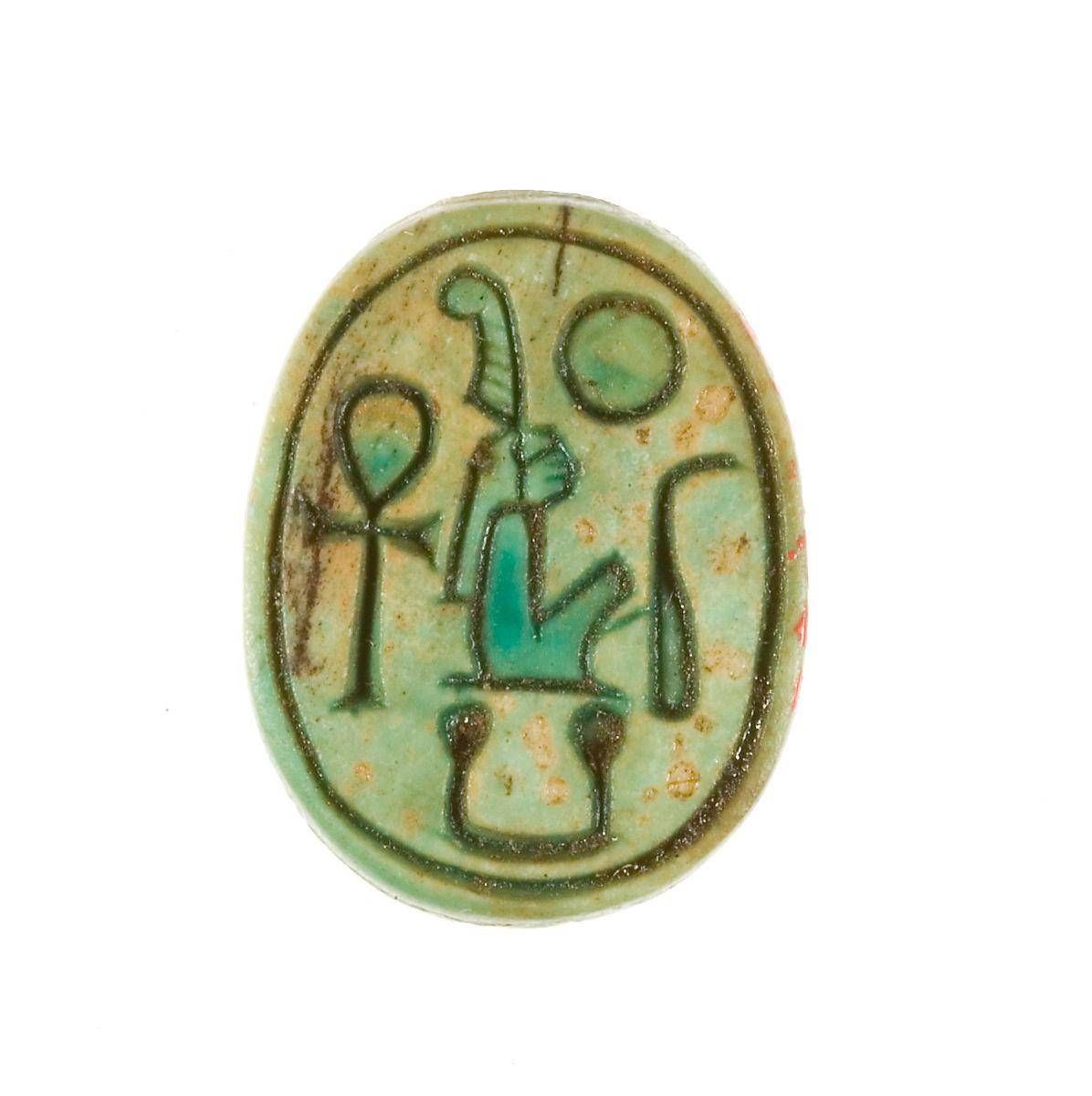
Scarab Inscribed Maatkare (Hatshepsut) Living
Unknown Artist
During the 1926-1927 excavation season, the Museum's Egyptian Expedition uncovered three foundation deposits along the eastern enclosure wall of Hatshepsut's funerary temple at Deir el-Bahri in Western Thebes. Among the contents were 299 scarabs and stamp-seals. Sixty-five of these are now in the Egyptian Museum, Cairo, and the rest were acquired by the Museum in the division of finds.
Among the inscriptions on the bases of these scarabs and seals are examples of every title Hatshepsut held, from the time she was "king's daughter" during the reign of her father, Thutmose I; through the time she was queen of her half-brother, Thutmose II; and during her regency and co-reign with her nephew/step-son, Thutmose III.
The inscription on the base of this scarab records Hatshepsut's throne name, Maatkare, which may be roughly translated as Maat (the goddess of truth) is the life force of Re (the sun god). The two hieroglyphs on either side of the crouching goddess have the meaning "May She Live," or "Living" (ankh.ti)
Two scarabsin the Museum (this one and 27.3.237) have nearly identical inscriptions and back designs and were probably carved by the same craftsman or pair of craftsman, if one specialized in carving the scarab itself and the other added the inscription.
Credit: Rogers Fund, 1927
c. 1479-1458 B.C.
Steatite (glazed)
0.6 in
27.3.239
Image and text © Metropolitan Museum of Art, 2020
Where you'll find this

Permanent collection
